Introduction
In this blog, we will use PYNQ overlays to connect the video stream from a USB webcam to a TFT screen, and then overlay text onto the displayed video.
What is PYNQ Overlay?
Overlays are programmable FPGA designs that extend applications from ZYNQ's processing system into programmable logic. They can accelerate software or customize hardware for specific tasks and are dynamically loaded like software libraries. Created by hardware engineers and wrapped with PYNQ's Python API, these overlays allow software developers to control specialized hardware without needing to design it themselves.
Displaying Laptop Screen over a display using overlays
In this section, we will try to use the HDMI ports on the board to get display data from my laptop and display on another screen.
I purchased a 5 inch LCD HDMI Touch Screen Display TFT LCD Panel Module online for the project. Lets first, directly connect it to the laptop using hdmi cable and make sure it is working.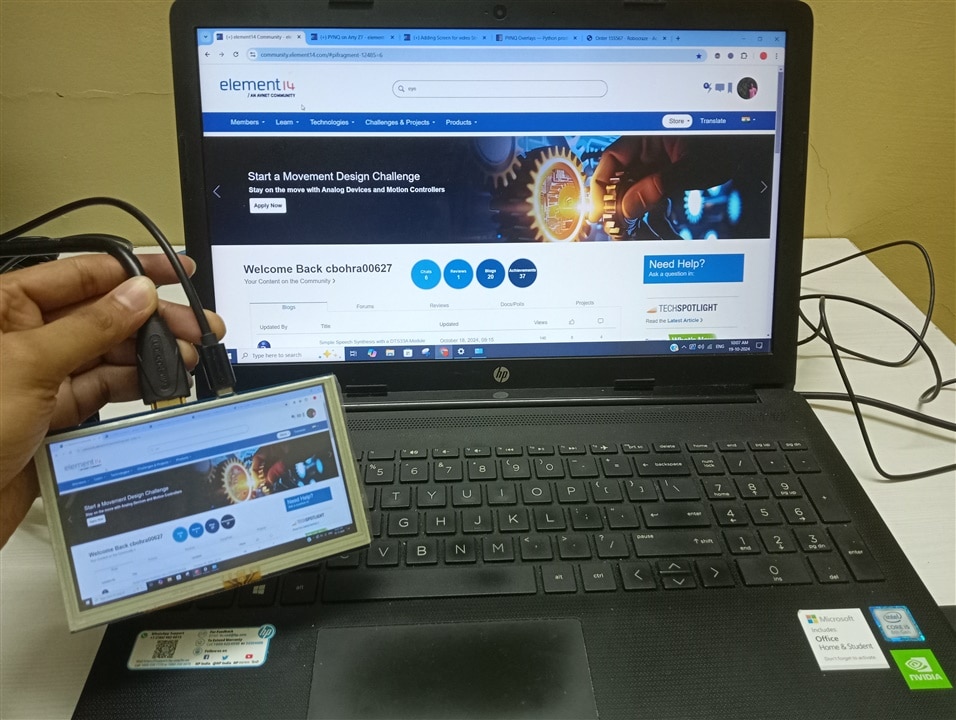
Now instead of directly connecting it to the laptop hdmi port, we will connect it to the HDMI out of the ZYNQ board and the output from the laptop will be connected to the HDMI in of the board as shown below. We will need two HDMI cables for this.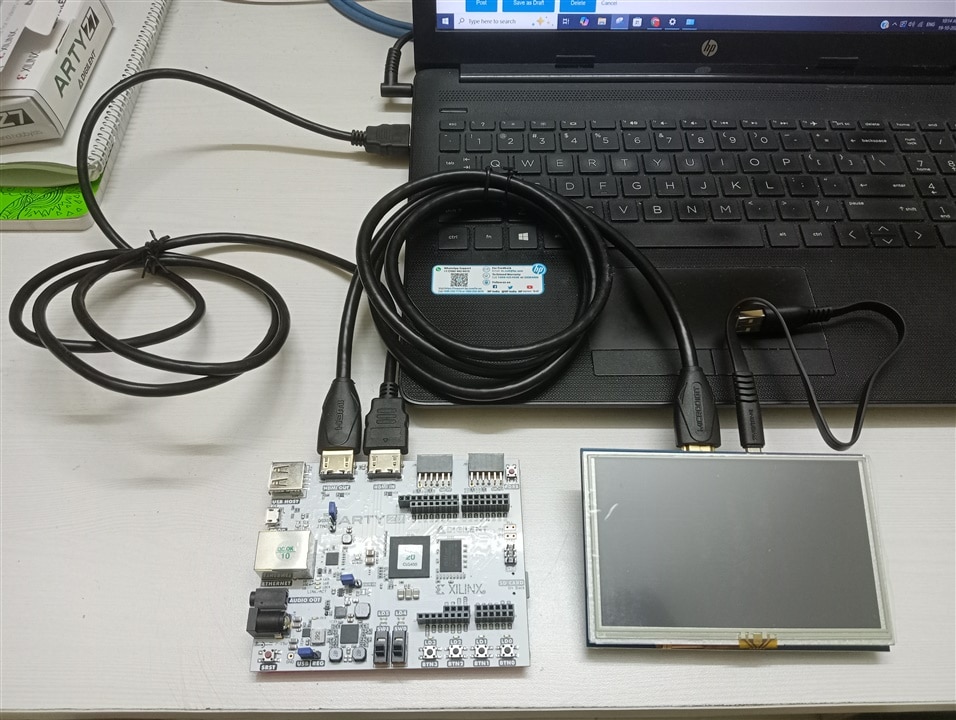
For this tutorial, we will need PYNQ installed on SD card and the card should be inserted in the board. Please follow this blog for the steps to install it.
Now, lets connect the board to the power and turn it in. Remember the jumper JP4 should select the SD card as boot mode.
When the board boots up successfully, connect it to the PC using the ethernet cable. Now browse to http://192.168.2.99. This will open the jupyter notebook.
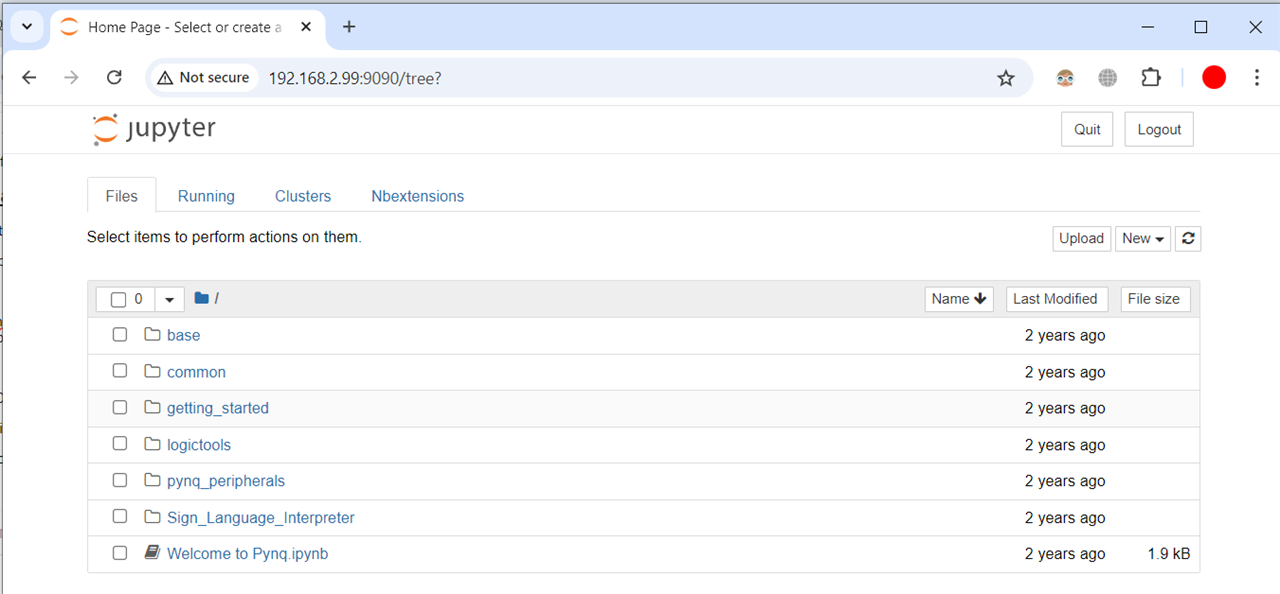
There is a good introduction jupyter notebook (/base/video/hdmi_introduction.ipynb) for HDMI which I have followed to create this demo.
So, now we will create our notebook and start working there.
- First, we will import the required modules and instantiate hdmi_in & hdmi_out.
from pynq.overlays.base import BaseOverlay from pynq.lib.video import * base = BaseOverlay("base.bit") hdmi_in = base.video.hdmi_in hdmi_out = base.video.hdmi_out - Then, we'll use the default pixel format which is 24 bit-per-pixel BGR formatted data for ease of use with OpenCV.
hdmi_in.configure() hdmi_out.configure(hdmi_in.mode) hdmi_in.start() hdmi_out.start()
- The monitor should turn on and show a blank screen.
- To pass the image data through we can tie the output to the input. The tie will last until we send something else to be displayed.
hdmi_in.tie(hdmi_out)
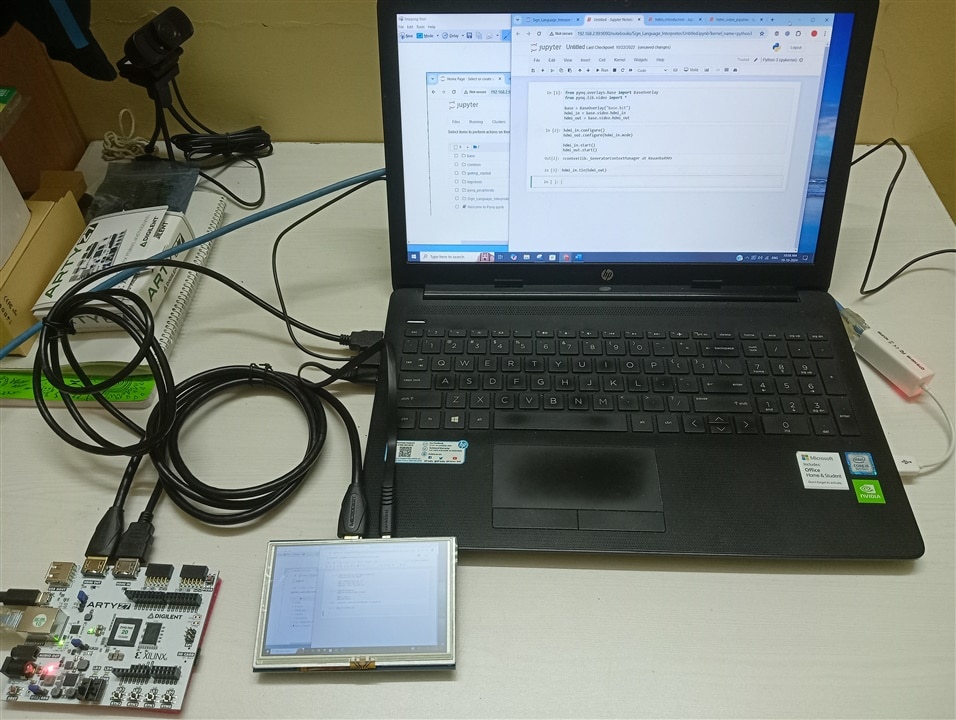
- Now, we will close the connection.
hdmi_out.close() hdmi_in.close()
Displaying video from USB webcam over a display using overlays
For this demo, I have followed the /base/video/opencv_filters_webcam.ipynb jupyter notebook.
- Load the overlays.
from pynq.overlays.base import BaseOverlay from pynq.lib.video import * base = BaseOverlay("base.bit") - Initialize HDMI output.
# monitor configuration: 640*480 @ 60Hz Mode = VideoMode(640,480,24) hdmi_out = base.video.hdmi_out hdmi_out.configure(Mode,PIXEL_BGR) hdmi_out.start()
- Specify webcam resolution.
# camera (input) configuration frame_in_w = 640 frame_in_h = 480
- Initialize camera from opencv.
import os os.environ["OPENCV_LOG_LEVEL"]="SILENT" import cv2 videoIn = cv2.VideoCapture(0) videoIn.set(cv2.CAP_PROP_FRAME_WIDTH, frame_in_w); videoIn.set(cv2.CAP_PROP_FRAME_HEIGHT, frame_in_h); print("capture device is open: " + str(videoIn.isOpened())) - Send webcam input to hdmi output.
import numpy as np ret, frame_vga = videoIn.read() if (ret): outframe = hdmi_out.newframe() outframe[:] = frame_vga hdmi_out.writeframe(outframe) else: raise RuntimeError("Error while reading from camera.")
- Now, this will just give us one frame at a time. To get complete video. We can put the code in a while loop as shown below.
while 1: ret, frame_vga = videoIn.read() if (ret): outframe = hdmi_out.newframe() outframe[:] = frame_vga hdmi_out.writeframe(outframe) else: raise RuntimeError("Error while reading from camera.")
- We can also run edge detection on the video using the below code. This code is given in the examples jupyter notebook.
import time num_frames = 20 readError = 0 start = time.time() for i in range (num_frames): # read next image ret, frame_vga = videoIn.read() if (ret): outframe = hdmi_out.newframe() laplacian_frame = cv2.Laplacian(frame_vga, cv2.CV_8U, dst=outframe) hdmi_out.writeframe(outframe) else: readError += 1 end = time.time() print("Frames per second: " + str((num_frames-readError) / (end - start))) print("Number of read errors: " + str(readError))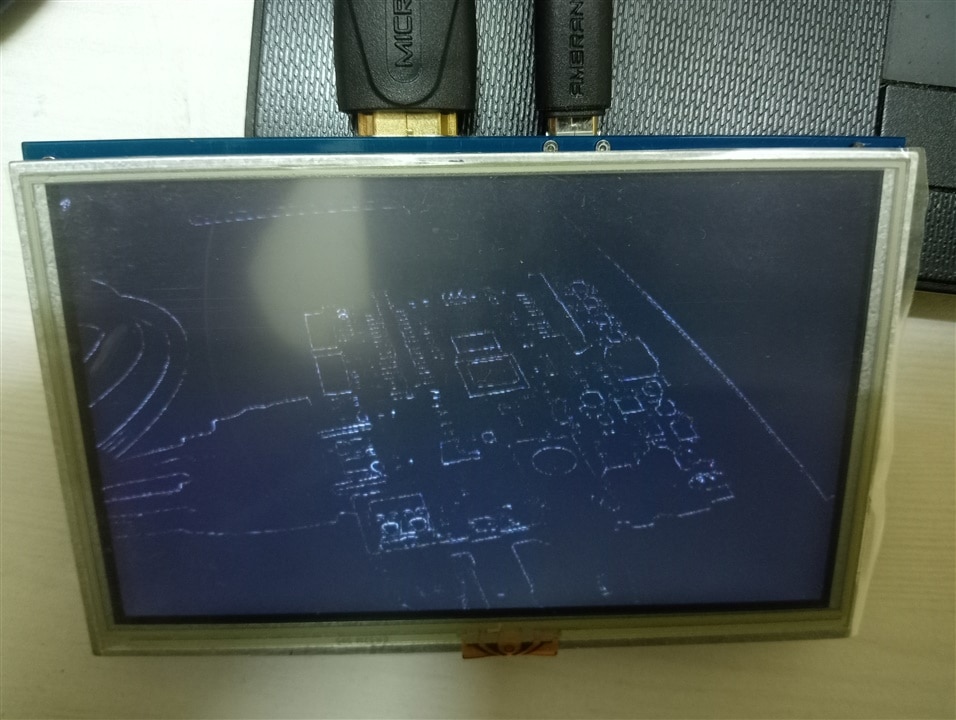
Adding text overlay on the video
We can just slightly modify our code to add some text over the video using Opencv.
while 1:
ret, frame_vga = videoIn.read()
# describe the type of font
# to be used.
font = cv2.FONT_HERSHEY_SIMPLEX
# Use putText() method for
# inserting text on video
cv2.putText(frame_vga,
'HEY THERE!',
(50, 200),
font, 3,
(0, 255, 255),
2,
cv2.LINE_4)
if (ret):
outframe = hdmi_out.newframe()
outframe[:] = frame_vga
hdmi_out.writeframe(outframe)
else:
raise RuntimeError("Error while reading from camera.")
Summary
In this blog, we explored how to stream video from a webcam and display it on a screen using the Arty Z7 board. We also learned how to enhance the stream by adding a text overlay. This was easy as easy as working on jupyter lab in your PC.
References
